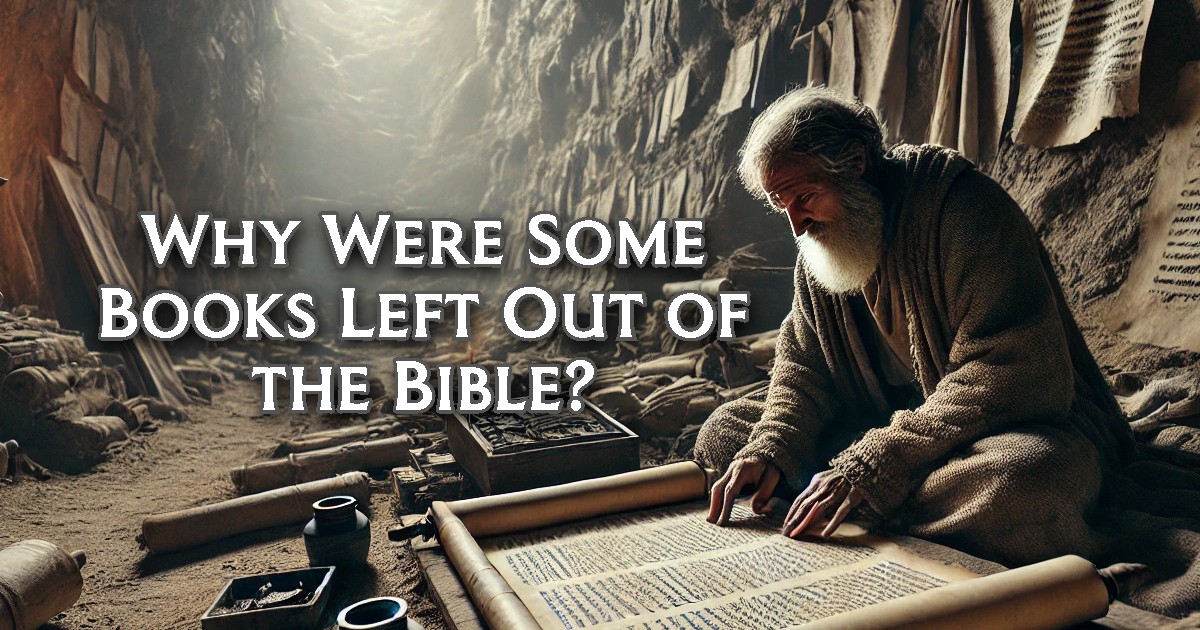The Bible is often viewed as a sacred, unified collection of divine texts. However, its composition was neither simple nor uniform. The question, “Why were some books left out of the Bible?” challenges traditional beliefs and reveals a complex historical process influenced by politics, theology, and power dynamics. A secular investigation into the earliest texts and the history of canon formation uncovers startling facts about how the Bible we know today came to be.
The Fluidity of Early Christian Texts
In the first few centuries after Jesus’ death, there was no universally accepted New Testament. Early Christian communities used a wide array of texts, including gospels, letters, and apocalyptic writings. These texts often reflected diverse theological perspectives. For example, the Gospel of Thomas and the Gospel of Mary present Jesus’ teachings in ways that differ significantly from the canonical gospels.
Secular scholars highlight that what became the “official” New Testament was not divinely preordained but the result of centuries of debate and decision-making. The process was influenced by which texts supported the emerging orthodoxy and the authority of the Church.
The Role of Early Church Councils
The canonization of the Bible was formalized through a series of Church councils, notably the Synod of Hippo (393 CE) and the Councils of Carthage (397 and 419 CE). These gatherings did not simply affirm divinely inspired books; they were political events where theological leaders debated which texts aligned with the doctrine they sought to establish.
Books that contradicted or complicated the Church’s developing theology were often excluded. For instance, the Shepherd of Hermas was popular among early Christians and even considered scripture by some, but it was ultimately rejected due to its apocalyptic nature and perceived theological inconsistencies.
The Influence of Power and Politics
The Roman Empire’s adoption of Christianity under Emperor Constantine in the 4th century significantly impacted the Bible’s formation. Constantine sought to unify the empire under a single religion, which necessitated a standardized set of beliefs—and thus, a standardized Bible.
The selection of canonical books was partly a political act to consolidate religious authority. Texts that supported hierarchical church structures and imperial power were favored, while those promoting radical or divergent views were suppressed. This political influence raises critical questions about the authenticity of the canon as a purely spiritual collection.
The Gnostic Gospels and Alternative Christianities
The discovery of the Nag Hammadi library in 1945 unearthed a treasure trove of early Christian writings, including the Gospel of Thomas, the Gospel of Philip, and the Gospel of Truth. These Gnostic texts present a radically different understanding of Jesus and salvation, emphasizing personal spiritual knowledge (gnosis) over blind faith and institutional authority.
The early Church labeled Gnostic beliefs as heretical, not necessarily because they were less authentic, but because they threatened the Church’s control over doctrine and interpretation. Secular analysis suggests that the suppression of these texts was part of a broader effort to maintain orthodoxy and religious unity, even at the expense of theological diversity.
Jewish Scriptures and the Old Testament Canon
The formation of the Old Testament canon was equally complex. The Hebrew Bible, or Tanakh, was not fully standardized until around the 2nd century CE, long after many of its books were written. The Septuagint, a Greek translation of Hebrew scriptures, included additional texts known as the Apocrypha, which remain part of the Catholic and Orthodox Bibles but were excluded from most Protestant versions.
The exclusion of these books during the Protestant Reformation was driven by theological and linguistic reasons. Reformers like Martin Luther sought to align the Old Testament more closely with the Hebrew Masoretic Text, rejecting books that were not part of the Jewish canon. This selective process underscores how religious and cultural shifts have continually shaped the Bible.
The Criteria for Inclusion: Who Decided What Was ‘Inspired’?
The criteria for including books in the canon were not uniform or divinely dictated. Factors included apostolic authorship, theological consistency with accepted doctrine, widespread usage in liturgy, and moral edification. However, these criteria were often applied subjectively.
For example, the Book of Enoch was highly influential in early Jewish and Christian thought, even quoted in the New Testament (Jude 1:14-15), yet it was excluded from the canon except in the Ethiopian Orthodox Church. Its exclusion likely stemmed from its detailed descriptions of angels and apocalyptic visions, which conflicted with later theological developments.
Conclusion
The question, “Why were some books left out of the Bible?” reveals that the formation of the biblical canon was a dynamic process influenced by theological debates, political power, and historical context. Far from being a fixed, divinely ordained collection, the Bible is a product of human decisions made over centuries.
Secular investigations challenge us to view the Bible not just as sacred scripture but as a historical artifact shaped by the complex interplay of faith, authority, and cultural evolution. Understanding this process invites both believers and skeptics to engage with the Bible more critically and thoughtfully.
Sources:
- “Lost Christianities” by Bart D. Ehrman
- “The Formation of the Christian Biblical Canon” by Lee M. McDonald
- “The Orthodox Corruption of Scripture” by Bart D. Ehrman

